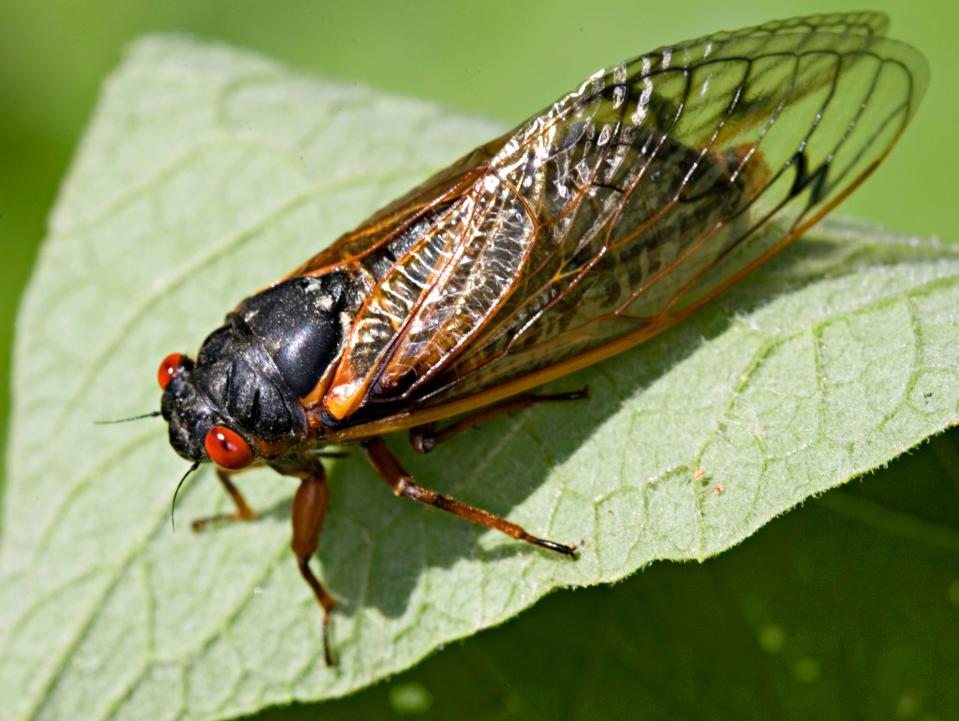Tons of cicadas will emerge in Wisconsin soon. Here's how to protect your plants and gardens
Cicadas will emerge in parts of Wisconsin this month and could cause damage to local trees and shrubs. It's the first time since 2007 that Brood XIII, or 17-year cicadas, are making an appearance in the state.
The bugs eat more than 250 types of trees species, preferring sapling trees, like ornamental shrubs and bramble fruits, such as raspberries and blackberries.
Here's when Wisconsinites can expect to see cicadas and how to product their gardens from any damage.
RELATED: 'Trillions' of cicadas? See how and where dual cicada broods will emerge in 2024
When will the 17-year cicadas emerge in Wisconsin?
Experts expect the 17-year cicadas to come out in southern Wisconsin during the last two weeks of May, said PJ Liesch, director of the University of Wisconsin-Madison Insect Diagnostics Lab.
Soil temperatures need to exceed 64 degrees for cicadas to emerge. That means cicadas in northern Wisconsin will likely emerge later than the southern portion of the state.
Cicadas only live for about four to six weeks, which means they'll only be around in Wisconsin this summer for about a month.
Where will the 17-year cicadas emerge in Wisconsin?

The 17-year cicadas will emerge in five Midwestern states, including Wisconsin, according to the website Cicada Mania. They're also expected to appear in much of northern and central Illinois, eastern Iowa and small portions of northwestern Indiana and southern Michigan.
The insects won't emerge uniformly across Wisconsin. In fact, some counties might not see them at all. Lake Geneva and the Chicagoland area are expected to be cicada hot spots. Meanwhile, the insects haven't been seen in Milwaukee County for "several decades" and aren't expected to emerge there this summer, Liesch said.
RELATED: When and for how long will 17-year cicadas be around in Wisconsin in summer 2024?
What causes 'flagging' in trees?
During years where cicadas emerge, tree flagging, or sections of wilted leaves, can be widespread and damage plants.
Female cicadas can damage trees and shrubs when they lay eggs on trees. While laying eggs, they use their saw-like appendage, known as the ovipositor, to place eggs on the branches. Twigs and branches can be broken by the wind and fall to the ground or dangle from the tree.
How can you protect plants and gardens from cicadas?
Damage from cicadas tends to be tolerated by larger trees, and you usually don't have to do anything to protect them, according to the University of Wisconsin-Madison.
For smaller trees and shrubs, you can consider postponing any new planting until cicadas have subsided. Small trees and shrubs that have already been planted can be protected with mesh netting during the egg laying period.
Netting should have the mesh size of about 1/4 inches or less. It should be put over the trees when male cicadas are first heard singing. You can secure the netting to the trunk of a tree beneath the lower branches and remove it once cicada activity has ended. If you can't secure netting, eggs can be removed by pruning out and destroying young twigs where eggs were deposited.
Summer 2024 cicada map:
This map shows where Brood XIII 17-year and Brood XIX 13-year cicadas are expected to emerge this summer.
USA Today contributed to this report.
This article originally appeared on Milwaukee Journal Sentinel: How to protect your trees, shrubs from 2024 cicadas in Wisconsin

